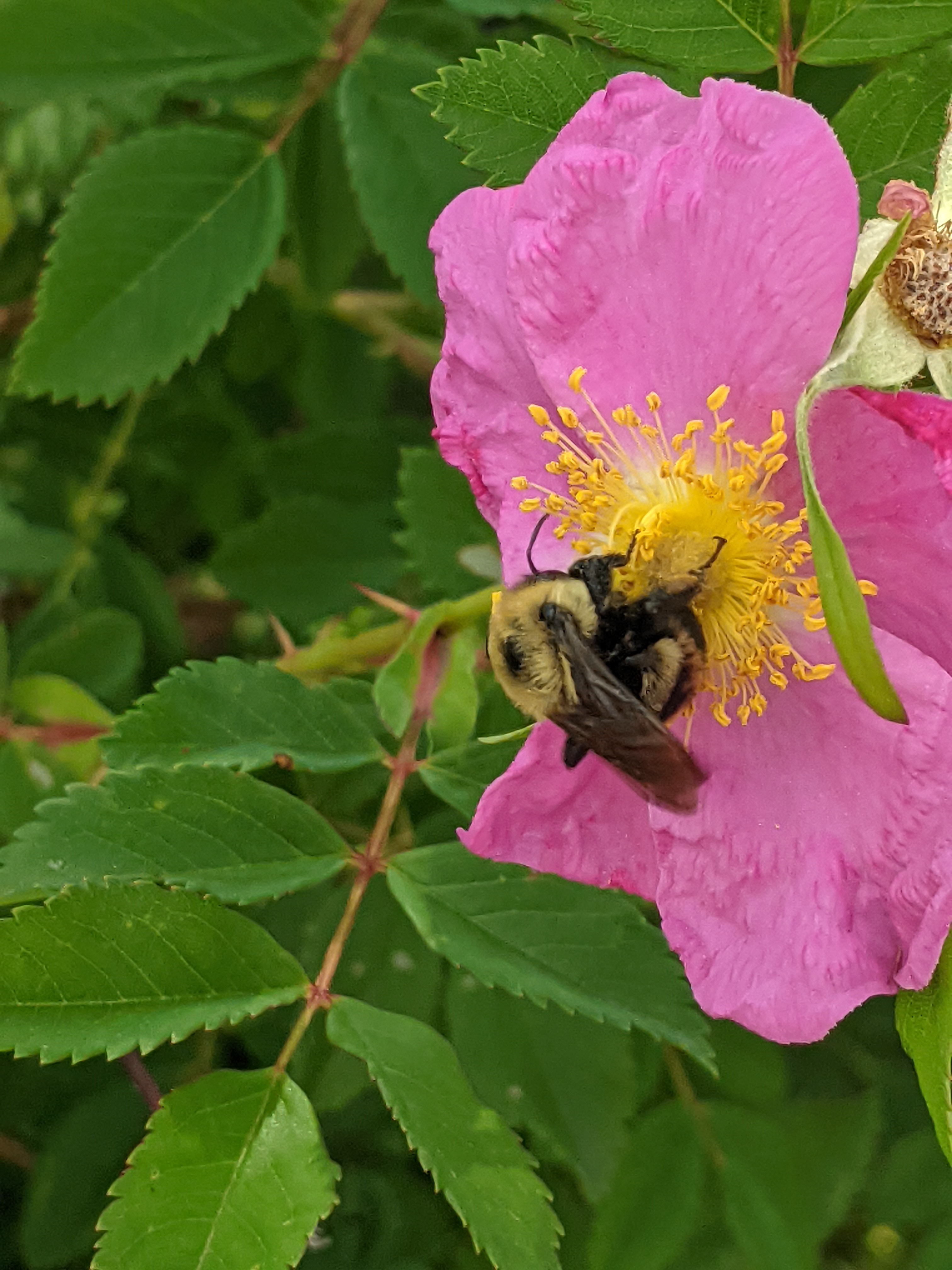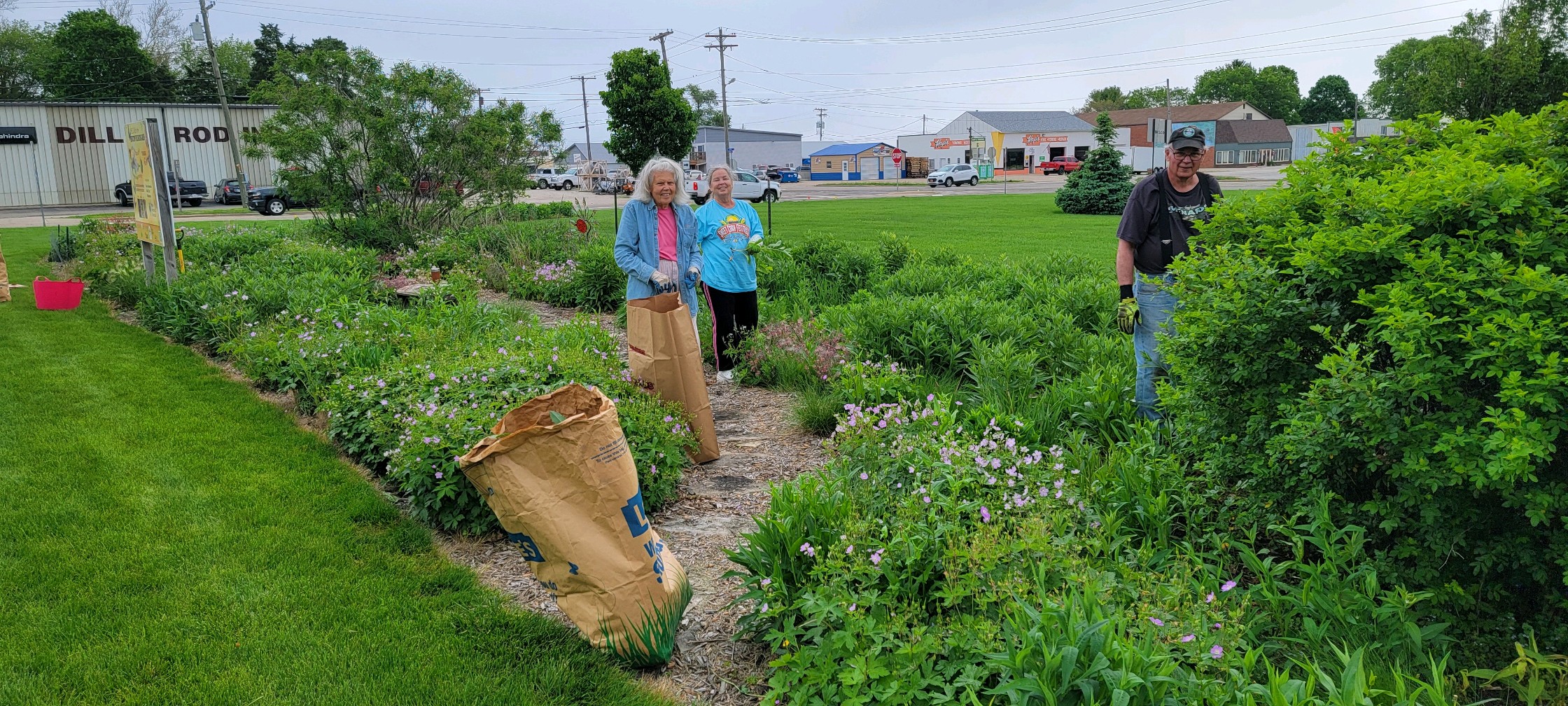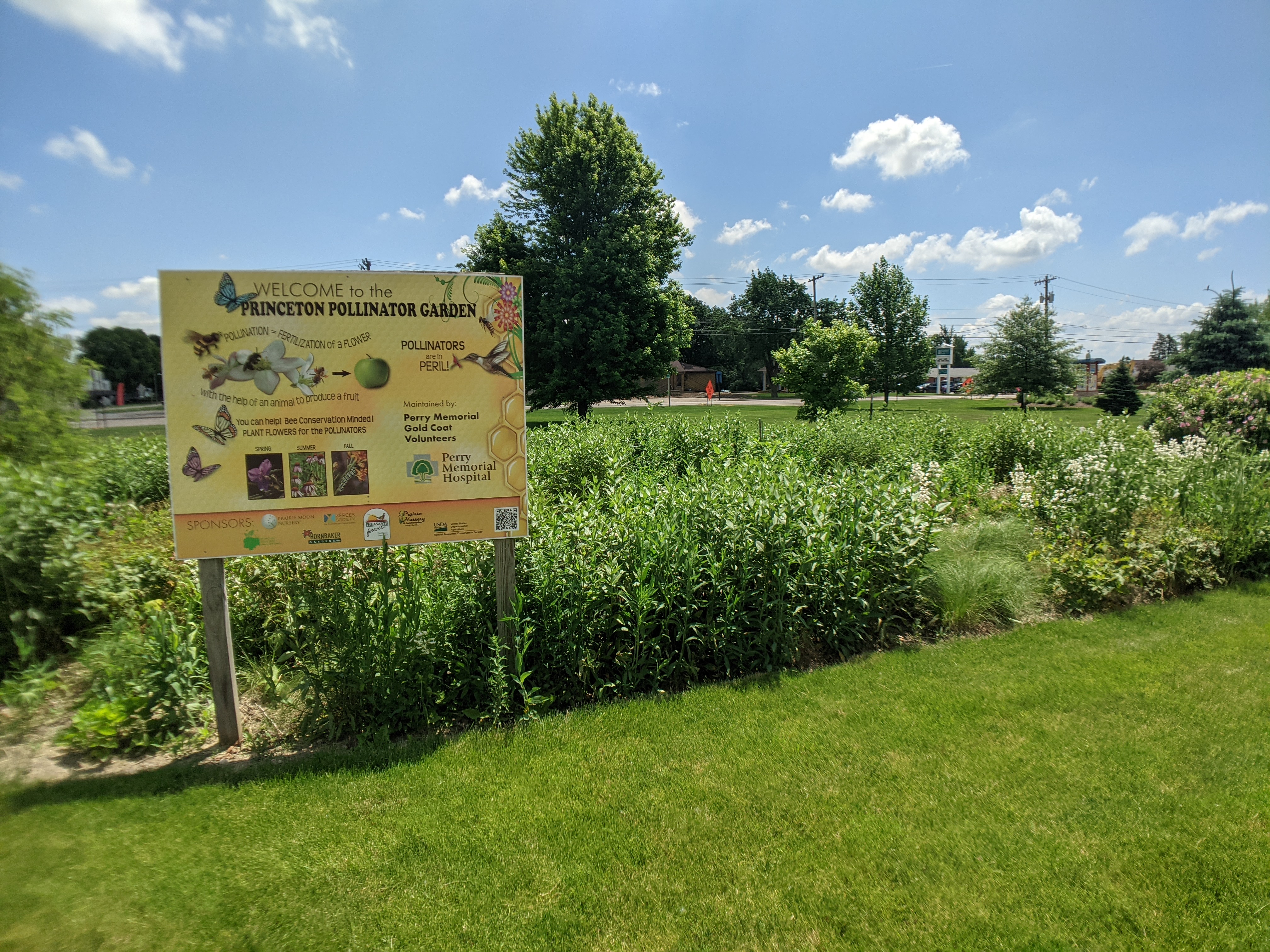 Pollinator Week is a good time for reflecting on what needs to be done to protect monarch butterflies and pollinators. Nearly all conversations about monarchs these days touch upon the familiar battle cry for their recovery, "plant milkweed and nectar plants." Pollinators are in need of healthy, pesticide free habitat and there are many ways and places for getting it into the ground. One woman in Princeton IL opted to take the message to her community and involve them in the solution.
Pollinator Week is a good time for reflecting on what needs to be done to protect monarch butterflies and pollinators. Nearly all conversations about monarchs these days touch upon the familiar battle cry for their recovery, "plant milkweed and nectar plants." Pollinators are in need of healthy, pesticide free habitat and there are many ways and places for getting it into the ground. One woman in Princeton IL opted to take the message to her community and involve them in the solution.
Ellen Starr moved to Princeton IL in 2013 primed and ready to dive into a project to help pollinators recover from alarming declines. The eastern monarch butterfly population had been in free fall for the past two decades and in a few years, the rusty-patched bumblebee would be declared endangered. Now was the time to act. These were problems her 15 years as a biologist with the Natural Resources Conservation Service (NRCS), US Department of Agriculture, had prepared her to tackle and Princeton was the right place at the right time for launching a high-profile pollinator demonstration garden. Starr saw the garden as the first step in realizing her vision of creating a pollinator friendly community.
Emily Dickinson famously wrote a prairie needed clover, a bee and reverie. To make a prairie (1755). Less poetically but more practically, a modern-day pollinator garden needs land, a plan, plants and people, all of which came together in Princeton.
Pollinator gardens are made from the ground up. The type of soil, annual rainfall and daily hours of sun govern the choice of flowers, grasses and shrubs that in turn determine the colors, shapes and textures available to the designer.
Vicki Morrical, a landscape architect with NRCS, blended the various components required for a pollinator garden to form a plan which included the plants suitable for the site in a combination of native species with high value pollen and nectar blooming throughout three seasons, larval host plants for butterflies and areas for both ground and cavity nesting bees.
"Landscape architecture is a planning profession," Morrical explained. "We work to accommodate the multiple functions of a project in an appealing way that is compatible with the surrounding landscape."
It was a year of planning, organizing and securing donations before plants could go into the ground. During that year, local officials and businesses rallied in support of the project. A site for the garden was found; the local and state chapters of Pheasants Forever each donated $500; Bureau County Soil and Water Conservation District agreed to sell plants to the project at cost; Prairie Nursery and Landscaping cut sod and rototilled the site, donated flagstone for a walkway and provided mulch after the plants were installed, the city added a spigot to a fire hydrant for watering, Hornbaker Gardens donated a redbud tree and brought out hoses and sprinklers for watering the plants. When everything was ready, thirteen volunteers showed up to plant the 700 flowers and shrubs that make up the garden.
“It was like magic the way it came together,” said Starr. It was the magic of a vision connecting with an enthusiastic, supportive community.
Enthusiasm for the routine maintenance waned after a few years. Again the community stepped up. Several master gardeners have volunteered to do the regular weeding and trimming to keep the garden tidy.
The pollinator garden is a generous, 2,400 square feet and clearly a beautiful space designed for the enjoyment of people and the health of pollinators. In June 2021, the edges were neatly trimmed, the plants were a modest height and pleasingly spaced. A stone path lined with airy white patches of beardtongue beckons visitors to enter and explore. A five-foot mound of pink roses humming with bumble bees was proof the garden was meeting its intended purpose.
 The garden rises out of a large area of mown turf adjacent to the public library and is a visual extension of the library’s mostly native plant landscaping. Islands in the parking lot are planted with prairie clover, butterfly weed and prairie dropseed; serviceberry trees rise from flowing rivers of grass in a memorial sculpture garden and a low growing bank of junipers running along an expanse of windows is dotted with common milkweed.
The garden rises out of a large area of mown turf adjacent to the public library and is a visual extension of the library’s mostly native plant landscaping. Islands in the parking lot are planted with prairie clover, butterfly weed and prairie dropseed; serviceberry trees rise from flowing rivers of grass in a memorial sculpture garden and a low growing bank of junipers running along an expanse of windows is dotted with common milkweed.
The high-profile location by the library creates opportunities for educational outreach. The garden is visible to library patrons and a large eye-catching sign signals something interesting is happening here, inviting passersby to come check it out!. Every encounter with a thriving, lively community of pollinators, no matter how casual, is a moment for gaining an appreciation for their marvelous diversity and a greater understanding of the essential services they are contributing.
A habitat garden built by a community is a way of returning land to butterflies and bees while creating an attractive civic amenity. It’s a place for seeing year-round wildlife, catching a glimpse of migrating visitors like monarchs, painted ladies, dragonflies and the many birds passing through looking to refuel for their journey.
 Starr’s vision of a pollinator friendly community is shared by Ray Mabry, a former city councilman and local realtor. Mabry, a councilman when Starr proposed the demonstration garden, had a ringside seat for following the project’s progress from start to finish. He recognized the benefits for pollinators and was convinced that when done thoughtfully as Starr had done, pollinator gardens are attractive landscaping and add value to a residential property, neighborhood and community.
Starr’s vision of a pollinator friendly community is shared by Ray Mabry, a former city councilman and local realtor. Mabry, a councilman when Starr proposed the demonstration garden, had a ringside seat for following the project’s progress from start to finish. He recognized the benefits for pollinators and was convinced that when done thoughtfully as Starr had done, pollinator gardens are attractive landscaping and add value to a residential property, neighborhood and community.
This year, Mabry is landscaping a vacant lot in downtown Princeton he acquired to transform into pollinator habitat. He is giving it what he describes as “the Mabry look,” sculpted with berms and a hardscape of stone from Wisconsin. Plants will be added this summer as weather permits.
Starr enlisted the support of elected officials, businesses and residents in planning and planting the garden, spreading awareness of the plight of pollinators along with knowledge of the solution throughout the community. The Princeton Pollinator Garden became a link between the residents of Princeton and the natural world. It is their interdependence made visible.
Log in tomorrow to learn how one woman's vision has turned the town square of Petersburg, Illinois into a pollinator paradise.
Lonnie Morris is the coordinator for the DuPage Monarch Project, a collaboration of the Forest Preserve District of DuPage County, River Prairie Group of the Sierra Club, The Conservation Foundation and Wild Ones Greater DuPage. The Project advocates for monarch and pollinator habitat through community organizing and engagement. She is a Sierra Club member and is thankful for everything she learned about protecting the environment from being a volunteer for the Club.